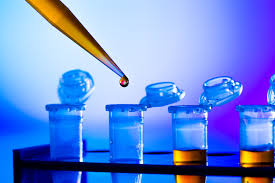With medics on the battlefield and doctors in remote or developing parts of the world, researchers have developed a new portable production system that can be used to produce treatments or manufacture a vaccine to prevent a disease outbreak in a remote village.
According to researchers Massachusetts Institute of Technology(MIT) in the US, getting rapid access to the drugs needed to treat patients can be challenging.
Biopharmaceutical drugs, which are used in a wide range of therapies including vaccines and treatments for diabetes and cancer, are typically produced in large, centralised fermentation plants.
This means they must be transported to the treatment site, which can be expensive, time-consuming, and challenging to execute in areas with poor supply chains.
Now a portable production system, designed to manufacture a range of biopharmaceuticals on demand, has been developed by researchers at Massachusetts Institute of Technology(MIT) in the US.
The system can be used to produce a single dose of treatment from a compact device containing a small droplet of cells in a liquid, researchers said.
In this way, the system could ultimately be carried onto the battlefield and used to produce treatments at the point of care.
It could also be used to manufacture a vaccine to prevent a disease outbreak in a remote village, according to Tim Lu from MIT.
"Imagine you were on Mars or in a remote desert, without access to a full formulary, you could programme the yeast to produce drugs on demand locally," said Lu.
The system is based on a programmable strain of yeast, Pichia pastoris, which can be induced to express one of two therapeutic proteins when exposed to a particular chemical trigger, researchers said.
"We altered the yeast so it could be more easily genetically modified, and could include more than one therapeutic in its repertoire," said Lu.
When researchers exposed the modified yeast to estrogen B-estradiol, the cells expressed recombinant human growth hormone (rHGH). In contrast, when they exposed the cells to methanol, the yeast expressed the protein interferon.
The cells are held within a millimetre-scale table-top microbioreactor, containing a microfluidic chip, which was originally developed by Rajeev Ram from MIT.
A liquid containing the desired chemical trigger is first fed into the reactor, to mix with the cells, researchers said.
Inside the reactor, the cell-and-chemical mixture is surrounded on three sides by polycarbonate; on the fourth side is a flexible and gas-permeable silicone rubber membrane.
By pressurising the gas above this membrane, researchers were able to gently massage the liquid droplet to ensure its contents were fully mixed together.
The findings were published in the journal Nature Communications.
(With Agency inputs)
